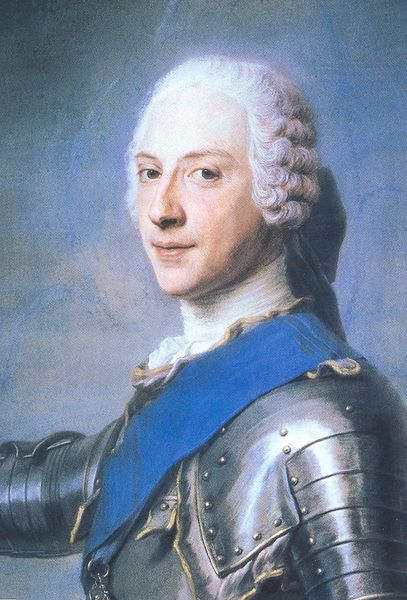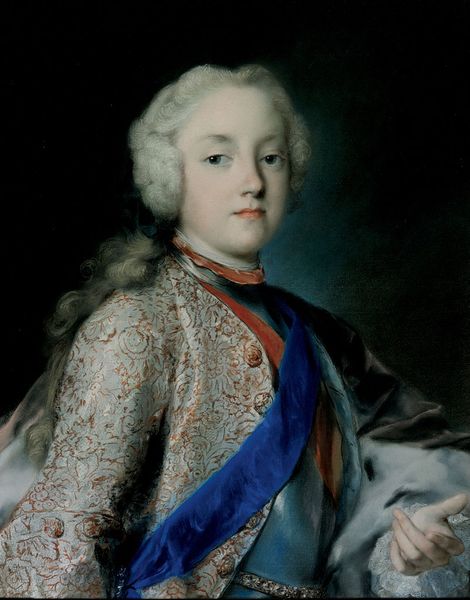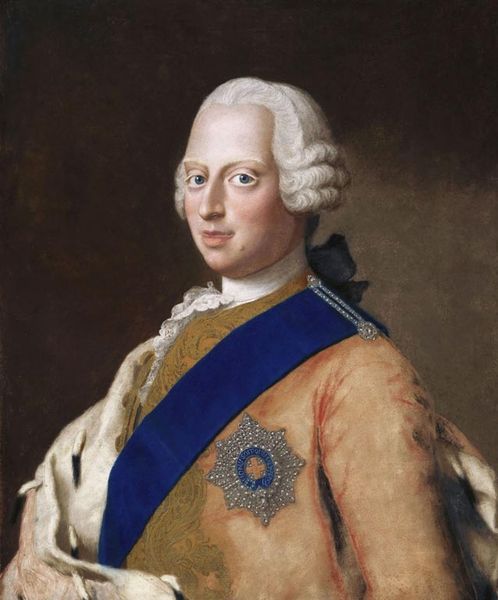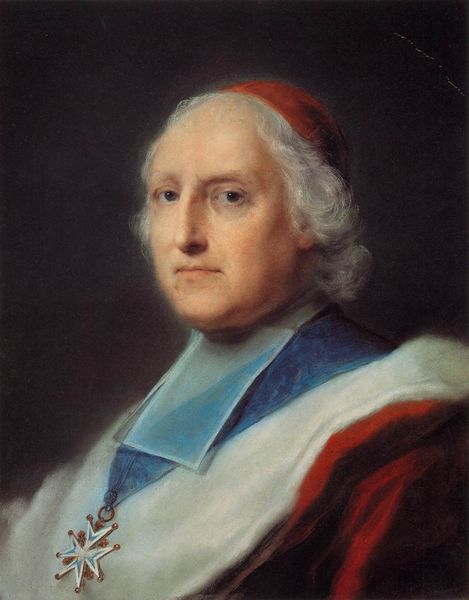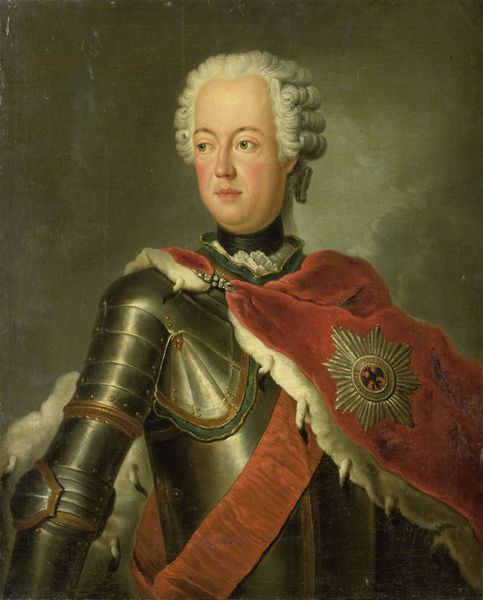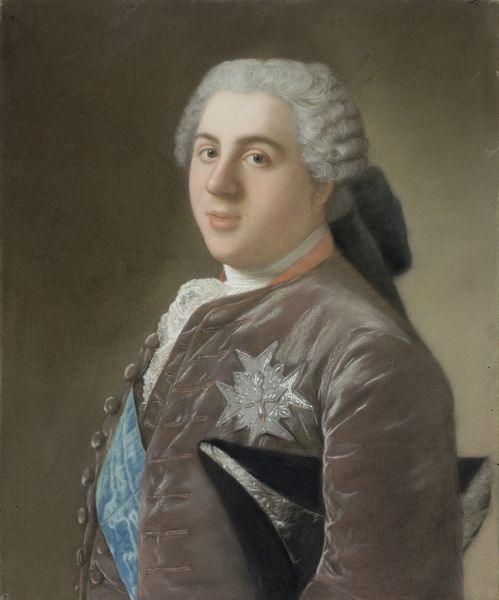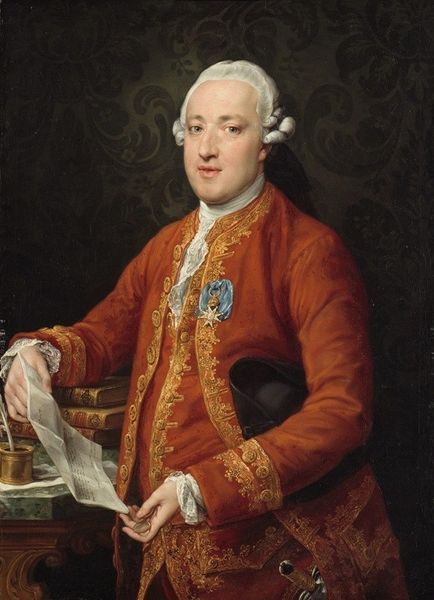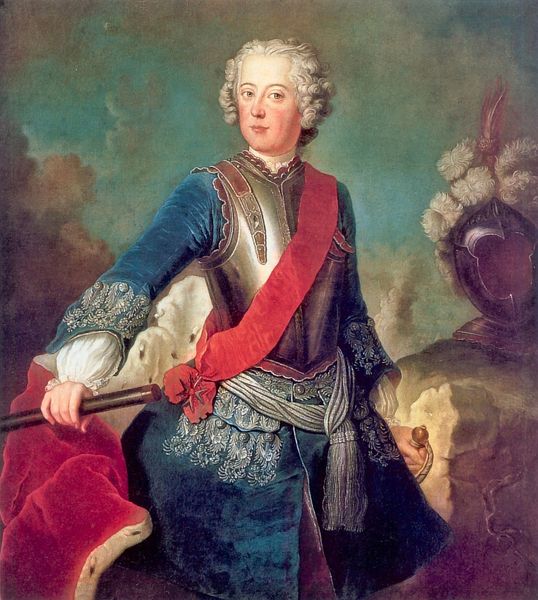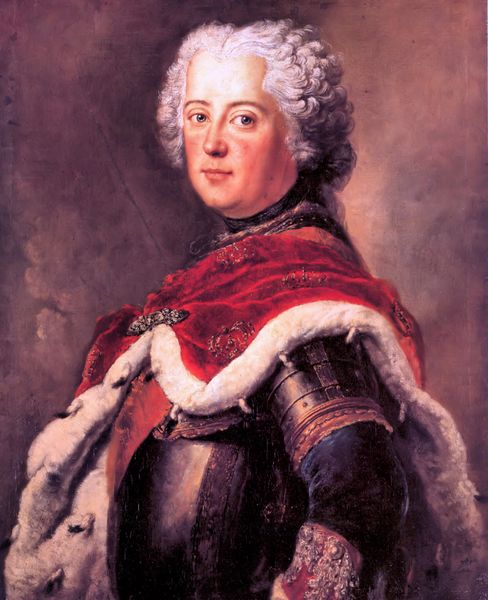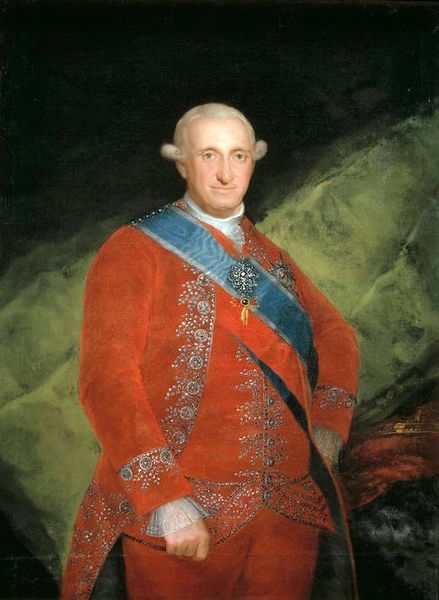
painting, pastel
#
portrait
#
painting
#
pastel
#
rococo
Copyright: Public domain
Maurice Quentin de La Tour created this portrait of Prince Xavier of Saxony with pastels, a medium that beautifully captures the texture and light of the 18th century. Pastels are interesting because they sit between drawing and painting. These powdery sticks of pigment need a skilled hand to blend and layer them, creating soft transitions of tone. The surface of the artwork is delicate and matte, different from the gloss of an oil painting. It invites you to look closely at the Prince's expression, the subtle flush of his cheeks, and the intricate lace at his collar. La Tour was a master of this technique, but it was a labor-intensive process. The pigment had to be carefully ground and mixed with a binder, then formed into sticks. It speaks to a time when art-making was intimately connected to the materials themselves, and the artist's skill in manipulating them. By emphasizing the surface rather than the depth of the pigment, La Tour captured the spirit of an era.
Comments
No comments
Be the first to comment and join the conversation on the ultimate creative platform.
